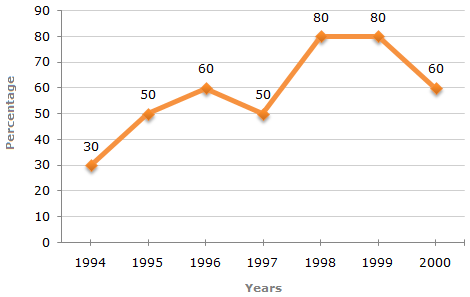The following pie-charts show the distribution of students of graduate and post-graduate levels in seven different institutes in a town.
Distribution of students at graduate and post-graduate levels in seven institutes:

1) What is the total number of graduate and post-graduate level students is institute R?
a) 8320
b) 7916
c) 9116
d) 8099
2) What is the ratio between the number of students studying at post-graduate and graduate levels respectively from institute S?
a) 14 : 19
b) 19 : 21
c) 17 : 21
d) 19 : 14
3) How many students of institutes of M and S are studying at graduate level?
a) 7516
b) 8463
c) 9127
d) 9404
4) What is the ratio between the number of students studying at post-graduate level from institutes S and the number of students studying at graduate level from institute Q?
a) 13 : 19
b) 21 : 13
c) 13 : 8
d) 19 : 13
5) Total number of students studying at post-graduate level from institutes N and P is
a) 5601
b) 5944
c) 6669
d) 8372
6 – 10):
The following line graph gives the percentage of the number of candidates who qualified an examination out of the total number of candidates who appeared for the examination over a period of seven years from 1994 to 2000.
Percentage of Candidates Qualified to Appeared in an Examination Over the Years

6) The difference between the percentage of candidates qualified to appeared was maximum in which of the following pairs of years?
a) 1994 and 1995
b) 1997 and 1998
c) 1998 and 1999
d) 1999 and 2000
7) In which pair of years was the number of candidates qualified, the same?
a) 1995 and 1997
b) 1995 and 2000
c) 1998 and 1999
d) Data inadequate
8) If the number of candidates qualified in 1998 was 21200, what was the number of candidates appeared in 1998?
a) 32000
b) 28500
c) 26500
d) 25000
9) If the total number of candidates appeared in 1996 and 1997 together was 47400, then the total number of candidates qualified in these two years together was?
a) 34700
b) 32100
c) 31500
d) Data inadequate
10) The total number of candidates qualified in 1999 and 2000 together was 33500 and the number of candidates appeared in 1999 was 26500. What was the number of candidates in 2000?
a) 24500
b) 22000
c) 20500
d) 19000
















